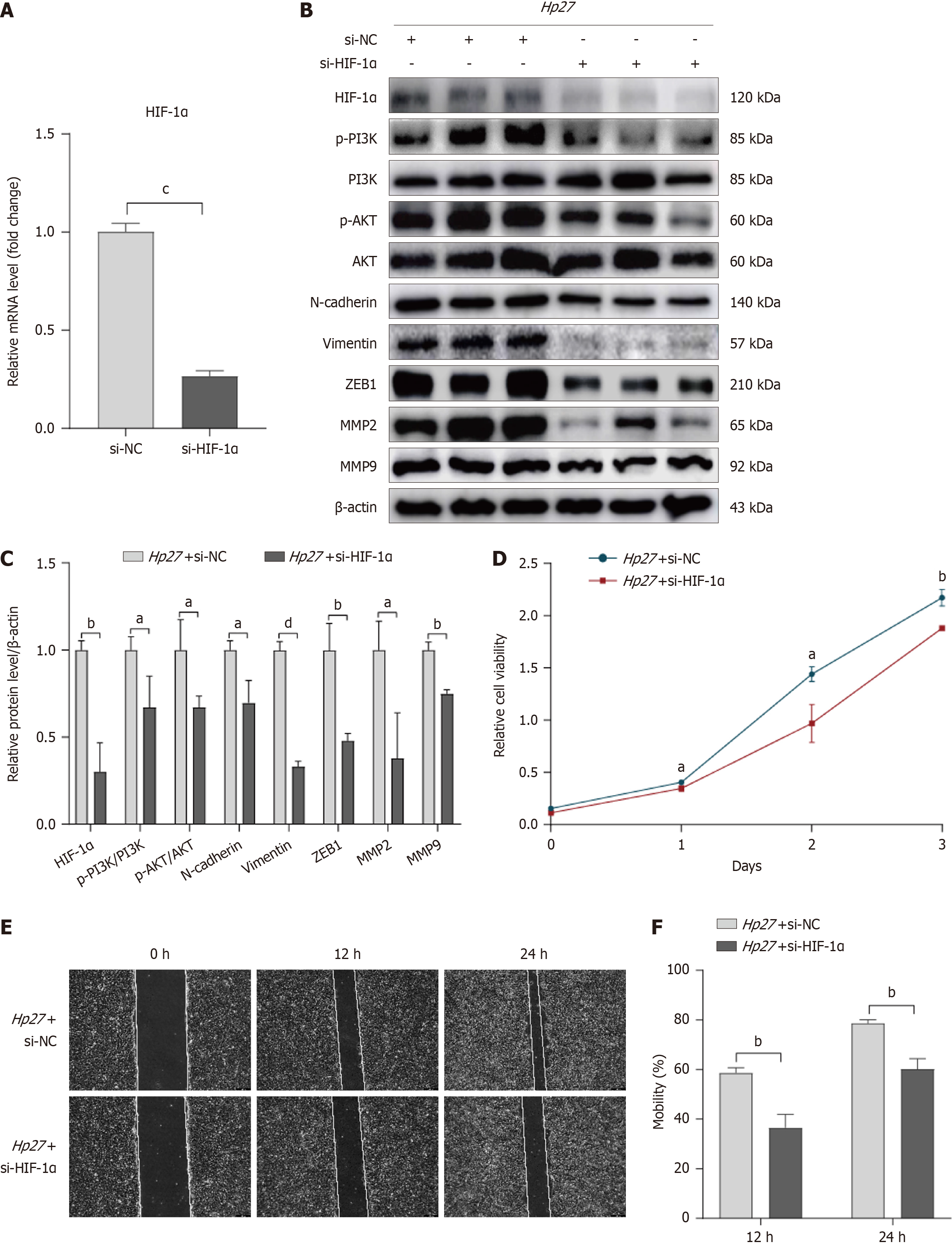Copyright
©The Author(s) 2024.
World J Gastrointest Oncol. Jul 15, 2024; 16(7): 3270-3283
Published online Jul 15, 2024. doi: 10.4251/wjgo.v16.i7.3270
Published online Jul 15, 2024. doi: 10.4251/wjgo.v16.i7.3270
Figure 3 Knockdown of hypoxia-inducible factor-1α suppresses the PI3K/AKT pathway, epithelial-mesenchymal transition, and cell proliferation, migration, and invasion.
A: Quantitative reverse transcription-polymerase chain reaction showed that hypoxia-inducible factor-1α (HIF-1α) small interfering RNA (siRNA) was successfully transfected into gastric epithelial cells (GES-1); B and C: The transfected GES-1 cells were co-cultured with H. pylori and Western blot analysis revealed the changes of HIF-1α, p-PI3K, p-AKT, epithelial-mesenchymal transition biomarkers, and invasion indicators; D: Cell counting kit-8 reagent was added into the cells with corresponding treatment and the absorbance at 450 nm was recorded; E and F: Detection of migration rate by wound healing assay. aP < 0.05, bP < 0.01, cP < 0.001, dP < 0.0001, compared with siRNA-negative control (NC) or Hp27 + siRNA-NC group. siRNA-NC: Small interfering RNA-negative control; HIF-1α: Hypoxia-inducible factor-1α.
- Citation: An TY, Hu QM, Ni P, Hua YQ, Wang D, Duan GC, Chen SY, Jia B. N6-methyladenosine modification of hypoxia-inducible factor-1α regulates Helicobacter pylori-associated gastric cancer via the PI3K/AKT pathway. World J Gastrointest Oncol 2024; 16(7): 3270-3283
- URL: https://www.wjgnet.com/1948-5204/full/v16/i7/3270.htm
- DOI: https://dx.doi.org/10.4251/wjgo.v16.i7.3270









